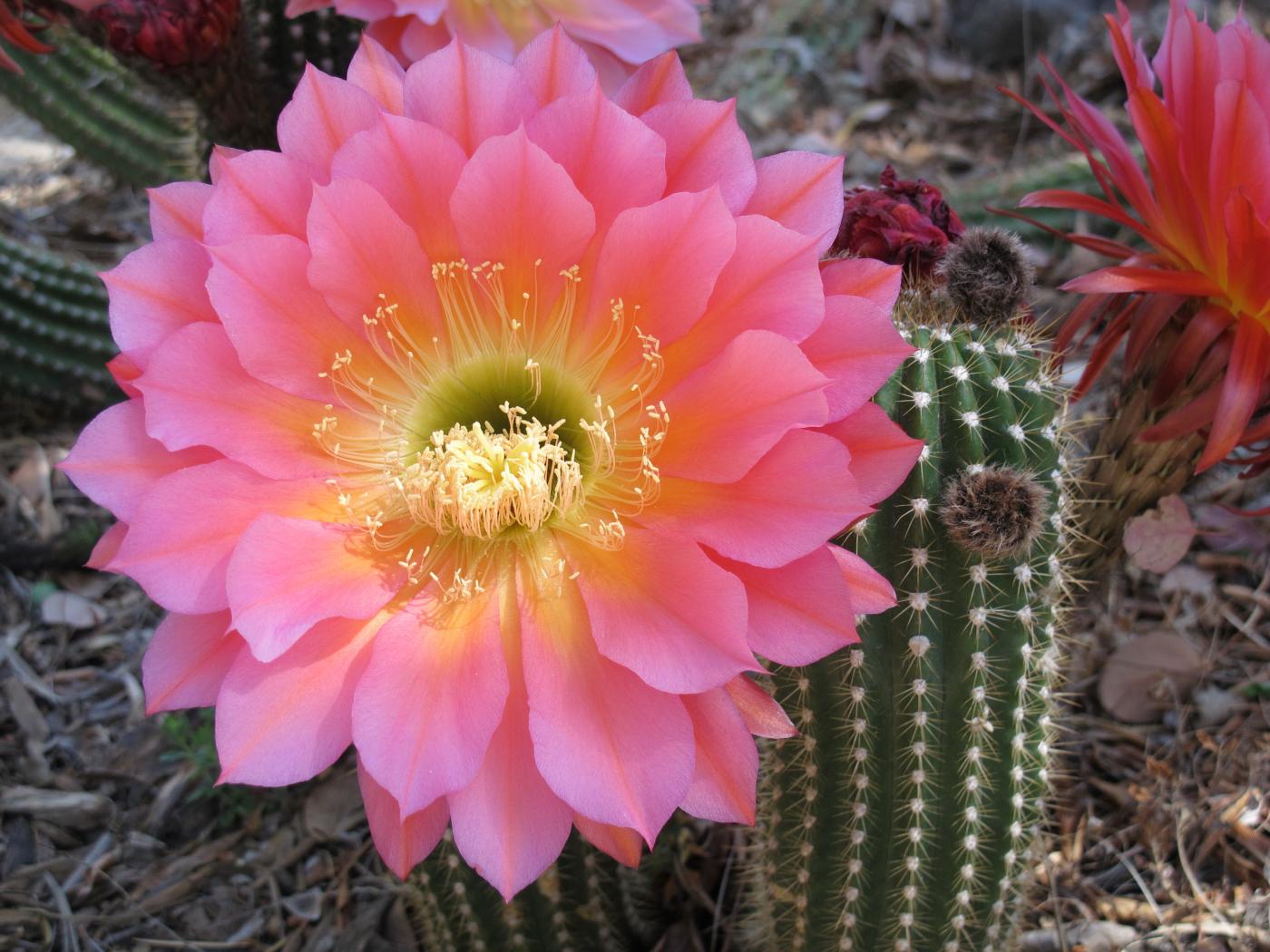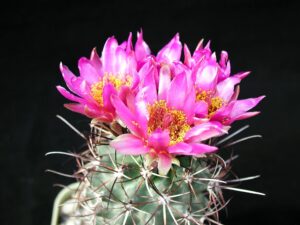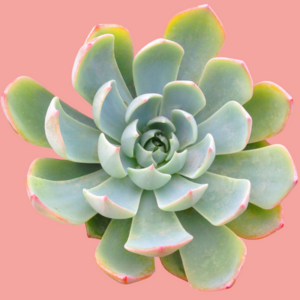When one envisions a cactus, the image often conjures up thoughts of arid landscapes, spiny exteriors, and a rugged resilience. However, not all cacti conform to this archetype. A particularly captivating subset of these desert dwellers showcases stunning blooms that seem to sprout directly from their tops, defying expectations and igniting curiosity. In this exploration, we delve into the unique world of cacti with flowers atop, revealing their aesthetic charm and the ecological intricacies that underpin their allure.
These floral marvels not only provide visual delight but also serve as vital components in their native ecosystems, drawing pollinators and adding layers of biodiversity to their environments. The sight of vivid blossoms crowned atop a cactus is nothing short of stunning, making it a fascinating subject for both botanists and casual observers alike.
In the realm of cacti, the presence of flowered tops is not merely an extraneous decorative feature; it embodies a symbiotic relationship with the arid climates these plants call home.
Understanding the relationship between these vibrant blooms and their hardy hosts introduces us to the enchanting qualities of cacti with flowers on top.
The Opuntia Family: A Kaleidoscope of Color
Among the most recognized cacti exhibiting exuberant blossoms atop their pads is the Opuntia genus, commonly known as prickly pears. These cacti flourish in diverse habitats, showcasing a remarkable ability to adapt to various environmental conditions.
Their flowers, which can range from soft pastels to vivid reds and yellows, herald the arrival of spring and early summer. This floral display attracts a myriad of pollinators, including bees and butterflies, which play crucial roles in plant reproduction. The sight of bright yellow blooms juxtaposed against the green, spiny pads is a quintessential mark of desert beauty.
What is particularly fascinating about Opuntia is its process of flowering. The blossoms often appear in clusters atop the pads, creating an ethereal effect as though nature is painting an intricate masterpiece. This characteristic provides gardeners with striking aesthetics and invites curiosity about their unique structures.
Yet, beauty is not the only benefit; these flowers often yield fruit, known as tunas, which are edible and packed with nutrients. The interdependence between the striking blossoms and their ecological roles makes the Opuntia truly exceptional.
Parodia: The Spanish Buttons
Another compelling category in the realm of cacti with spectacular flowers on top is represented by Parodia species, commonly referred to as the “ball cactus” or “Spanish buttons.” Characterized by their globular shape, these cacti are adorned with dense spines that provide natural protection.
As summer approaches, the cacti burst forth with vibrant blooms that can be orange, yellow, or fuchsia, creating an exquisite contrast with their textured bodies. The floral formations often emerge from the crown of the cactus, leading to a jubilant display that attracts an array of insect pollinators.
The Parodia’s unique ability to adapt its flowering cycle according to environmental conditions enhances its intrigue. These cacti exhibit resilience in varying climates, thriving in both subtropical and temperate regions. This adaptability underscores the remarkable evolutionary strategies that have allowed them to flourish in diverse ecosystems.
The blossoms themselves are ephemeral yet prolific, often lasting only a day or two, yet many flowers can bloom simultaneously. This characteristic creates an enchanting spectacle, turning a solitary cactus into a veritable display of color and life.
Echinopsis: The Night Bloomers
The Echinopsis genus unveils a different facet of cactus flowers with its intriguing nocturnal blooming habits. While many cacti flower during the day, certain species, such as Echinopsis oxygona, are renowned for their stunning night-blooming capabilities. The flowers are often large and trumpet-shaped, exuding a delightful fragrance that attracts nocturnal pollinators like moths.
The magnificence of Echinopsis flowers cannot be overstated; they are one of the largest and most richly colored of all cacti blooms, often reaching diameters of up to a foot. Their sheer size and grandeur make them a focal point in any collection.
Interestingly, the blooming cycle of Echinopsis is a complex interplay of environmental cues. Factors such as temperature, moisture, and even lunar cycles can influence the timing of these spectacular displays. This remarkable adaptability allows Echinopsis to thrive in many habitats, captivating enthusiasts with its enchanting spectacle.
Caring for Cacti with Flowered Tops
Appreciating the beauty of cacti adorned with flowers is only part of the appeal; caring for these plants requires understanding their unique needs. Most flowering cacti thrive in warm, well-draining environments, necessitating a balance of sunlight and water. Overwatering can be detrimental, leading to root rot, while insufficient light can hinder flowering.
Regular fertilization during the growing season can enhance their blooming capabilities, ensuring that these floral spectacles continue to grace our gardens and homes.
In conclusion, the world of cacti with flowers on top is a dynamic interplay of beauty, resilience, and ecological significance. From the vibrant Opuntia and the mesmerizing blooms of Parodia to the enchanting night flowers of Echinopsis, these unique variants captivate the imagination while performing essential ecological roles. Their aesthetic appeal, combined with their adaptability, solidifies their status as true marvels of the plant kingdom.





Leave a Comment